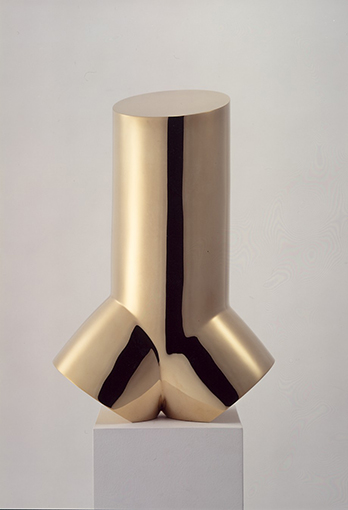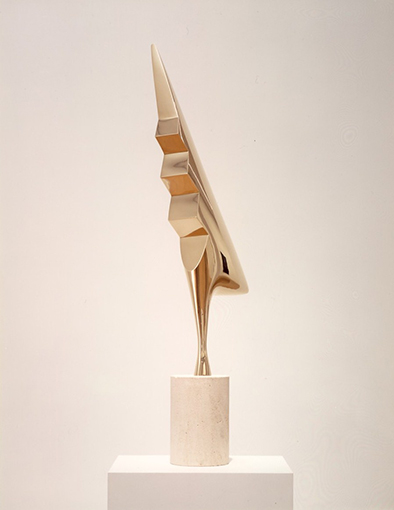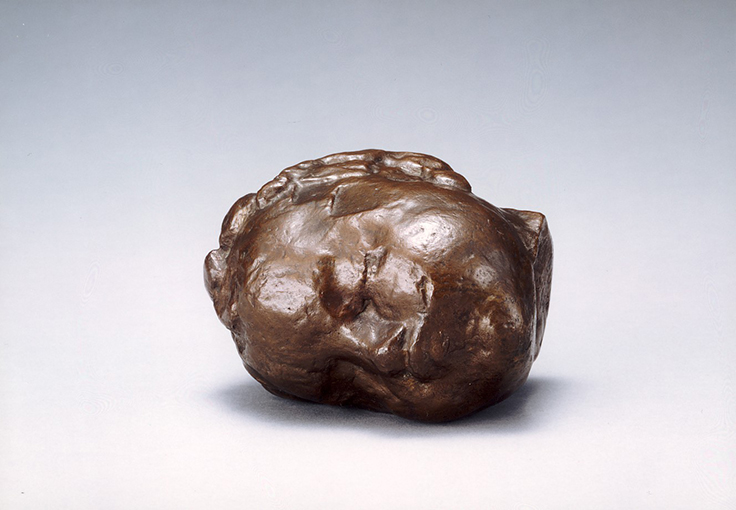
[Audio Guide]
In figural sculpture, a torso is the trunk section of the human body without a head, arms, or legs. The origin of this genre is the Renaissance period discovery of many examples of classical era sculpture that were missing hands, feet, and heads. Despite these missing elements, these works were highly celebrated as the human form depicted in classical sculpture is considered to be the ideal archetype. Brancusi’s torso is also connected to this tradition. The sculpture is composed of just three cylinders, depicting only the thighs and the trunk of the body from below the shoulders. For Brancusi, the ideal body is not one of realism. From just these features, the work conveys an imposing figure of powerful strength and surging youth. In order to display the true nature of “a young man,” Brancusi has removed all extraneous parts.

[Audio Guide]
Brancusi was constantly exploring the true nature of things. Accordingly, the principle point of interest in the large number of animal sculptures that he made is to give expression to their intrinsic qualities. For example, his birds are flying, and the fish are swimming. What is a rooster? Brancusi himself has provided an answer: “Whatever the shape or form, I will attempt to make this rooster cry out. I want to make the rooster cry out.” With its open beak, we can imagine the rooster raising a vigorous cry of “cock-a-doodle-doo.” The underside of the sculpture forms a zigzag, which is surely the shape of the quivering throat, full of power. Additionally, the surface of the sculpture is shiny like a mirror, tapering off and angled upwards, as the bird gives expression to an impossible dream, facing the heavens and soaring vigorously towards them.

[Audio Guide]
With a large forehead and plump cheeks, this sculpture shows the head of an adorable infant sleeping soundly and peacefully. It has a realistic expression, and the effect of the light on the uneven face and hair is like that of the Impressionists. The work makes us see that Brancusi has a firm grasp on the form of his subject, and is attempting to capture its true nature. Brancusi’s sculptures directly confront subject and truth, and he subsequently simplified their forms in order to prioritize his inquiry into their true nature. Brancusi himself has described this process in the following way: “To get close to the truth of a matter is to attain complete simplicity, in distinction to oneself.” The head of this infant would reach its ultimate simplification in the smoothly finished, abstract form of the egg-shaped work, Beginning of the World.